Image of the Day: January 2011
I See Red
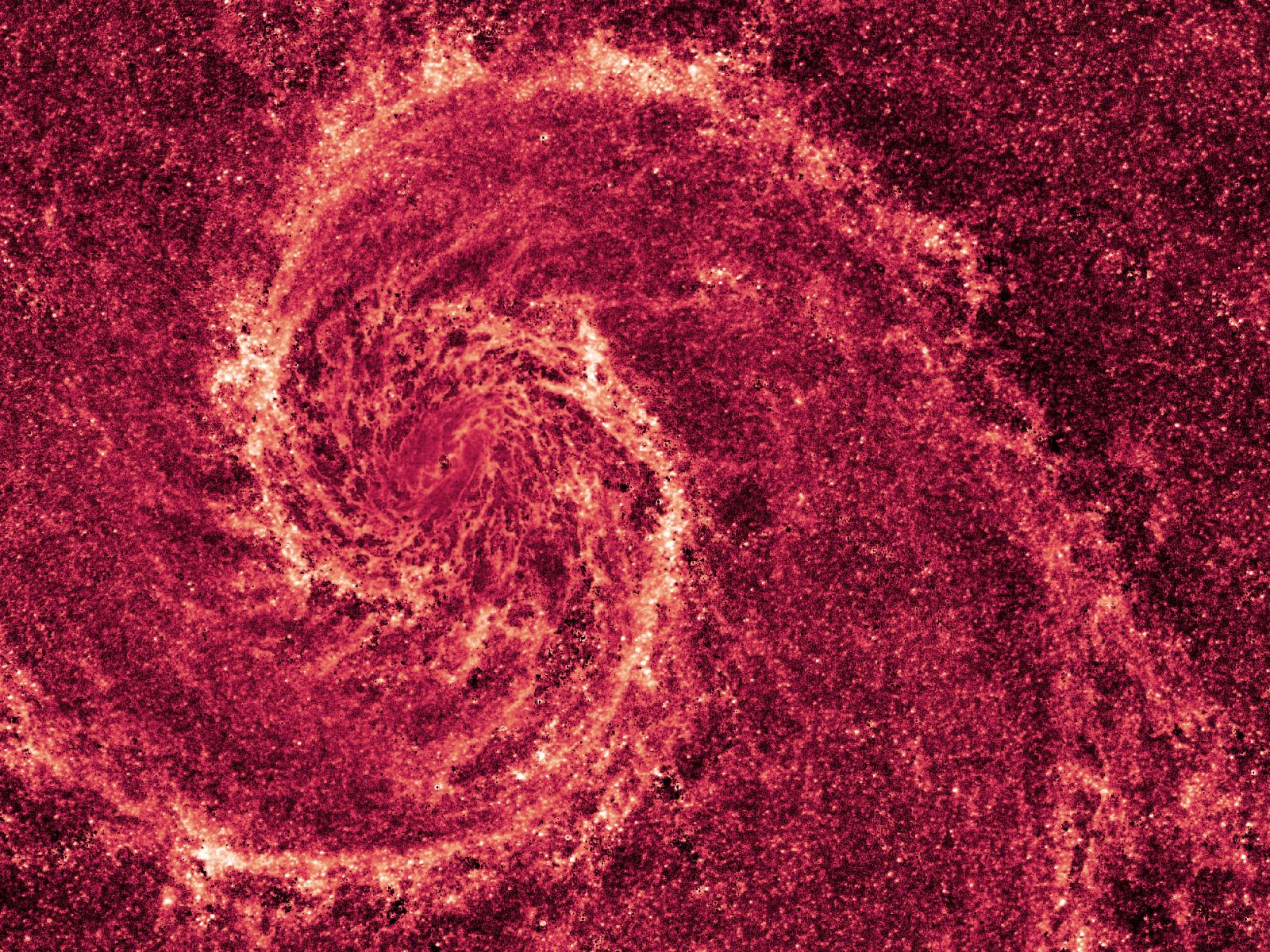
Tuesday, January 18, 2011: The Whirlpool Galaxy, AKA spiral galaxy M51, sports a new look when seen in near-infrared light by the Hubble Space Telescope. With most of the starlight removed, this image provides the sharpest view of the dust structure of the galaxy to date.
--Tom Chao
Ice on a Volcano
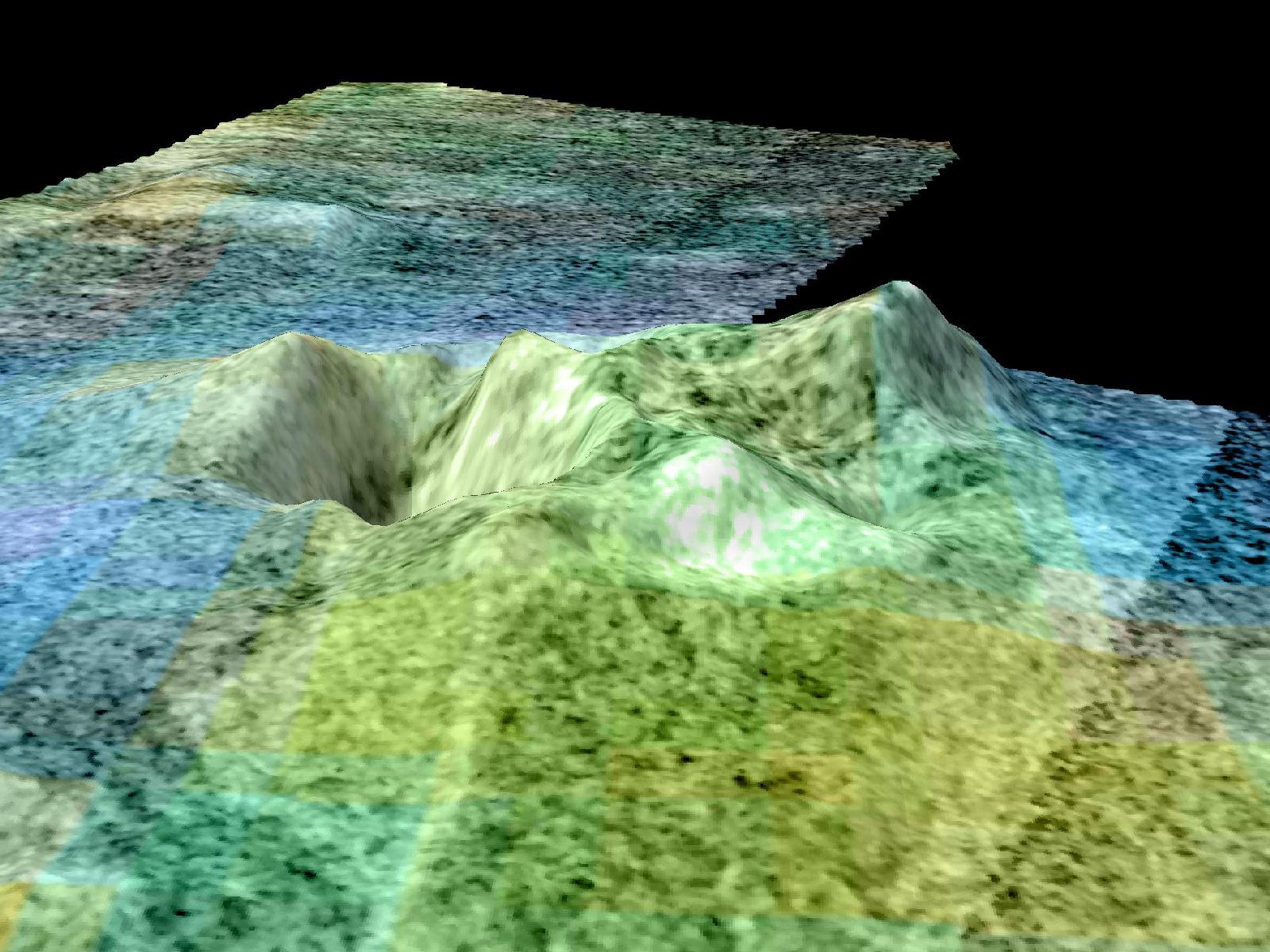
Wednesday, January 19, 2011: This topographic image shows an area of Saturn's moon Titan, known as Sotra Facula, which may harbor an ice volcano (cryovolcano). Finger-like flows suggest the presence of cryovolcanism. NASA's Cassini spacecraft collected data for this false-color image in which heights are exaggerated by a factor of 10.
--Tom Chao
Part of the Hole
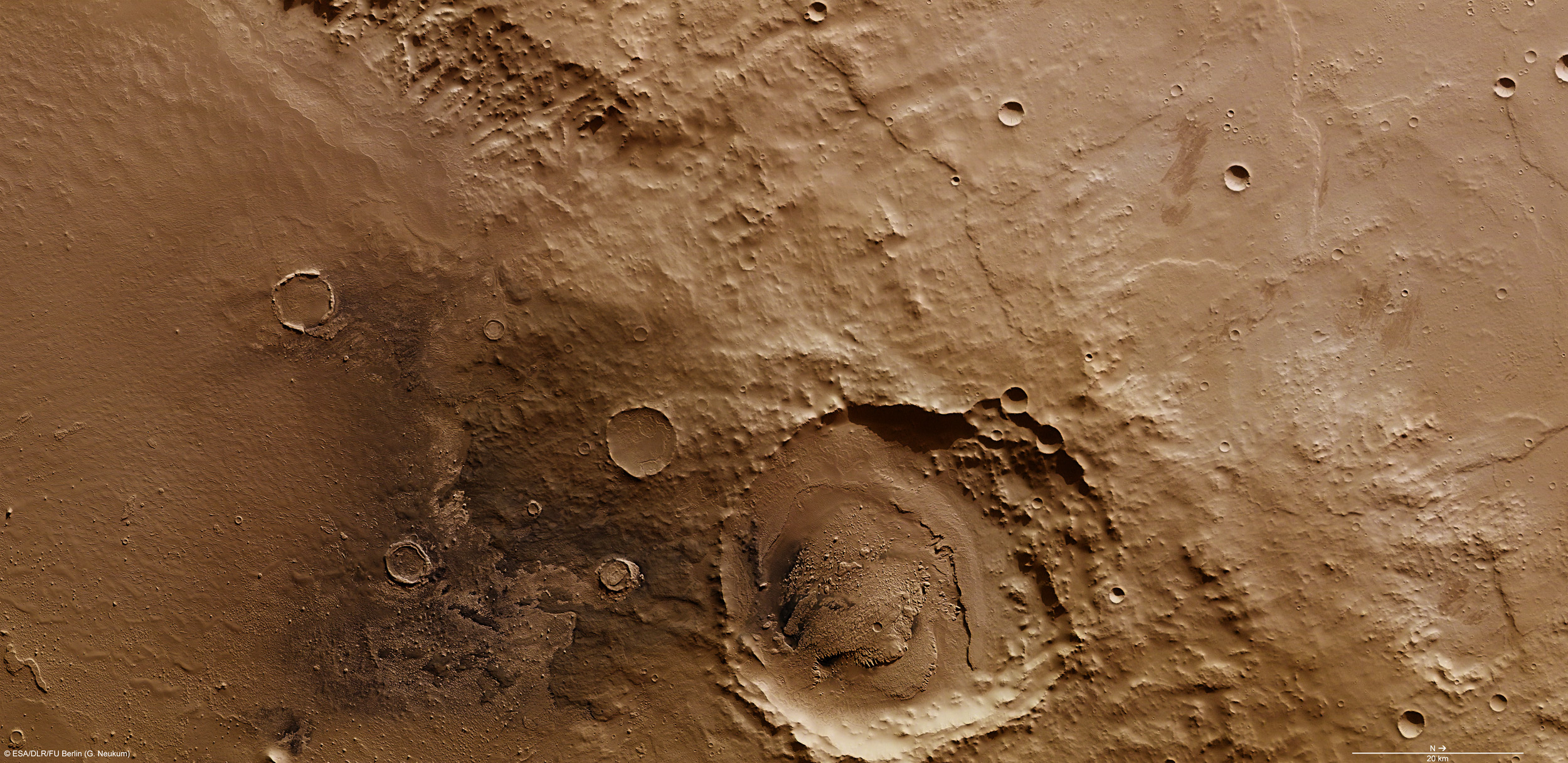
Thursday, January 20, 2011: ESA's Mars Express spacecraft used its High-Resolution Stereo Camera (HRSC) to capture this image of the Schiaparelli impact basin on Mars. This view only shows a small part of the basin’s northwestern rim cutting diagonally across the image (from top left to bottom right), and a smaller 26-mile (42-kilometer)-diameter crater embedded in its rim.
--Tom Chao
Sun Strokes

Friday, January 21, 2011: From the Chilean plateau of Chajnantor, where ESO's highly-advanced Atacama Pathfinder Experiment (APEX) telescope stands, comes an unique image created with very simple components. This "solargraph" shows trails of the sun in the sky taken over a six-month period from mid-December 2009 until the southern winter solstice in June 2010. The pinhole camera that made the image used a plastic film canister and a piece of photographic paper. After exposure, the paper was scanned into a computer, where the colors were reversed. The trails reveal very few clouds in the sky over Chajnantor.
--Tom Chao
Big Star(s) in Space
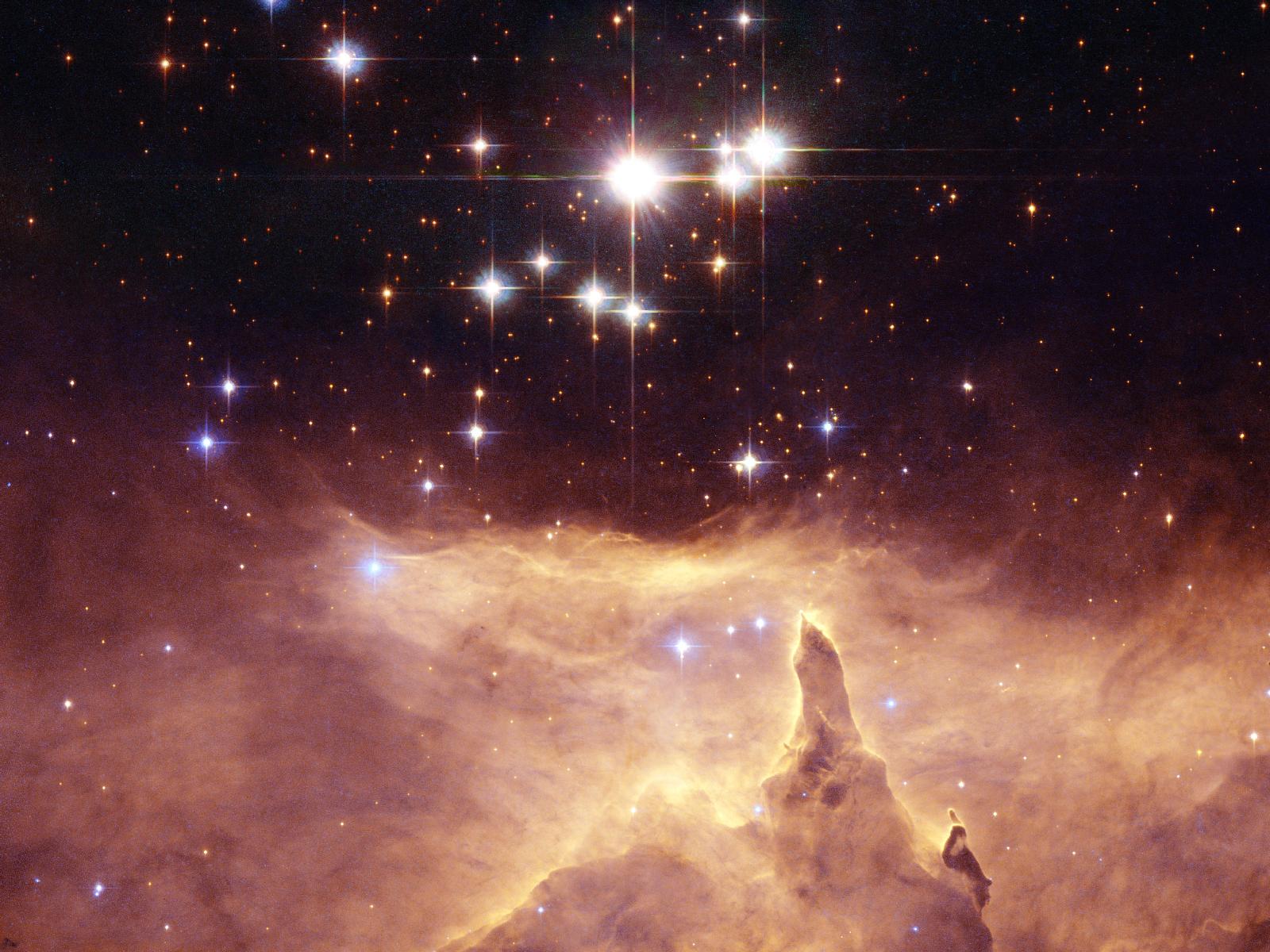
Monday, January 24, 2011: Pismis 24-1 shines brightest at the top center of this image, which displays the NGC 6357 nebula in Scorpius. Researchers previously considered Pismis 24-1 the most massive star in the galaxy at 200-300 solar masses, far above the current theorized limit of 150 solar masses. However, Hubble and ground-based telescopes have discovered that Pismis 24-1 is not merely a binary star system, but it is composed of a tight binary star system and a third star, meaning the individual stars cannot have broken the mass record.
--Tom Chao
Superblast!
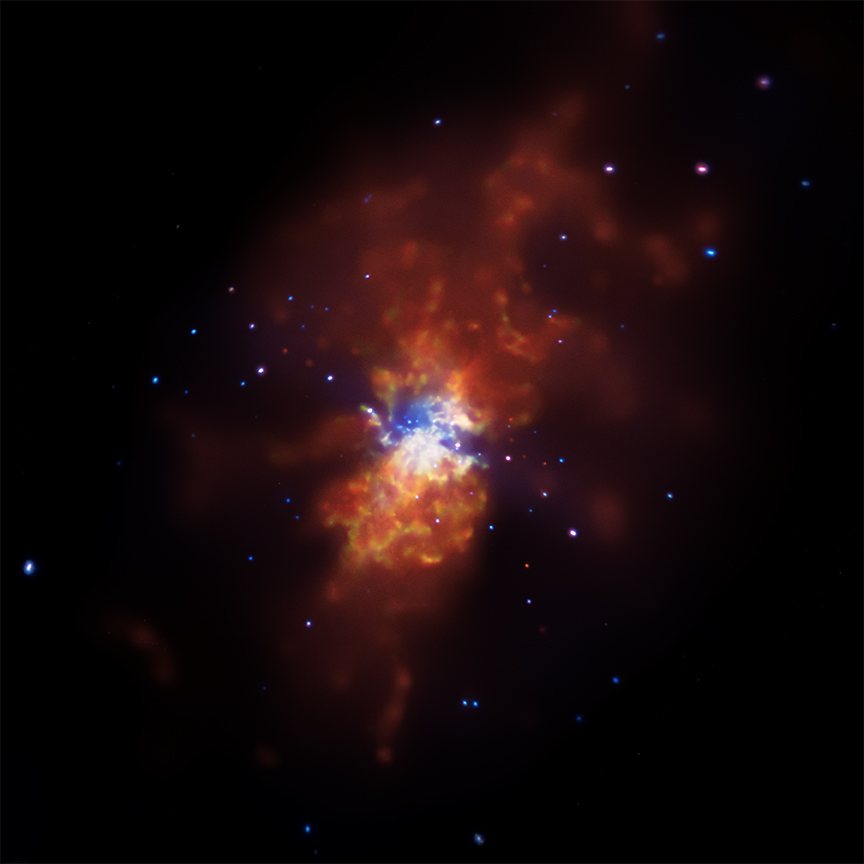
Tuesday, January 25, 2011: Messier 82 (M82) galaxy, known as a starburst galaxy, produces stars at rate tens or even hundreds of times faster than in normal galaxies. Astronomers believe that a brush with neighboring galaxy M81 millions of years ago, creating shock waves, set off this blast of star formation.
--Tom Chao
My Ever Changing Loops
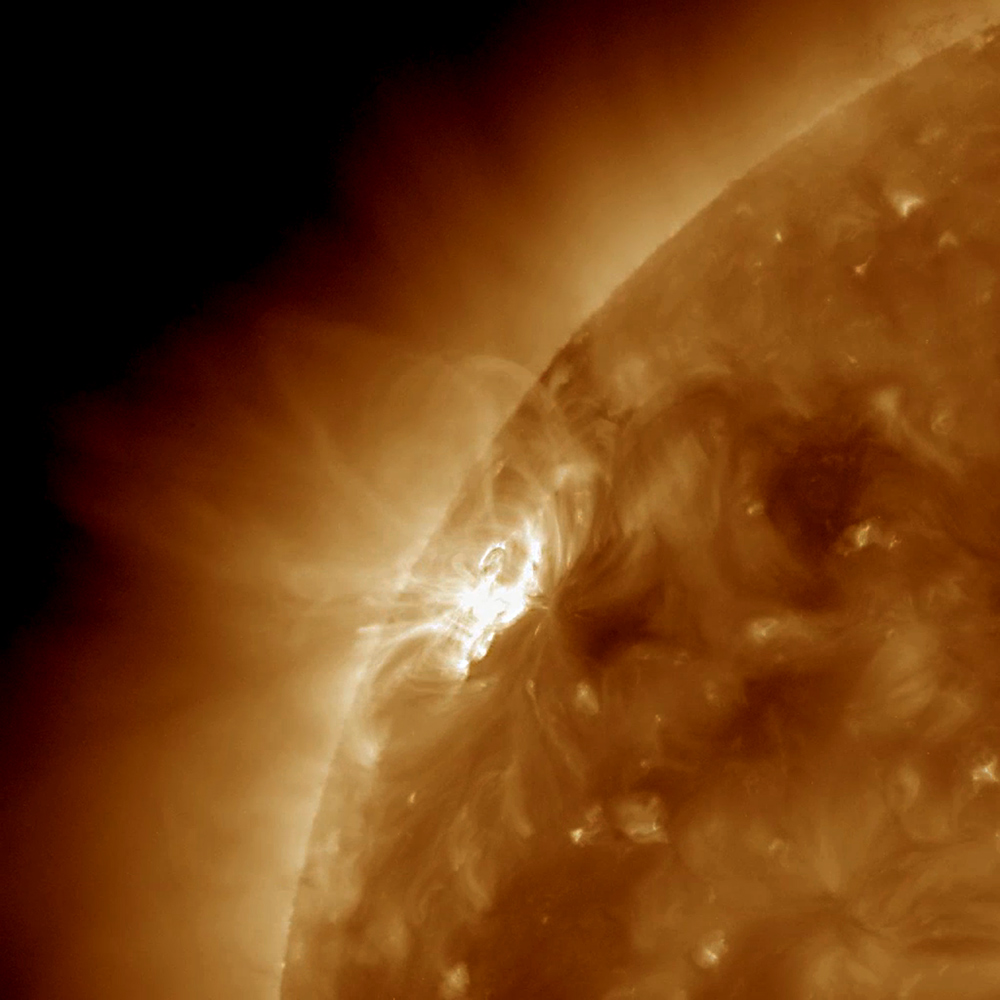
Wednesday, January 26, 2011: Magnetic loops emanating from the sun break apart and reconnect in this profile view taken by the Solar Dynamics Observatory (SDO), in January 2011. Regions like this with intense magnetic activity often appear as sunspots in filtered light.
--Tom Chao
Get the Space.com Newsletter
Breaking space news, the latest updates on rocket launches, skywatching events and more!
Remembering Apollo 1
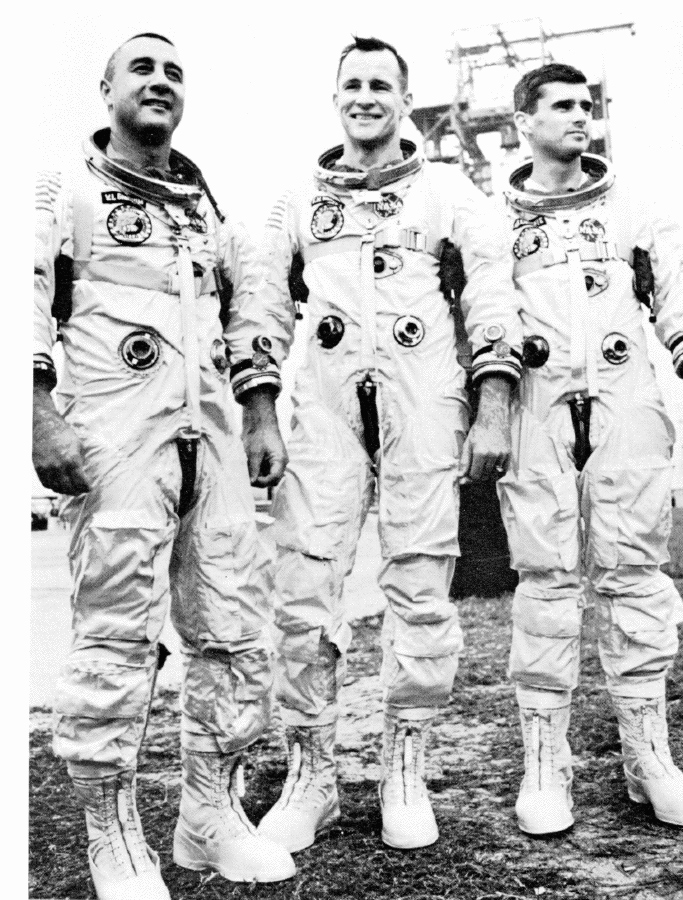
Thursday, January 27, 2011: Astronauts Virgil Grissom, Edward White, and Roger Chaffee lost their lives when a fire struck during testing for the AS-204 mission on January 27, 1967. The flight would have been the first Apollo manned mission, and NASA later renamed the mission Apollo 1 in honor of the astronauts. Following the disaster, NASA made substantial changes to increase safety.
--Tom Chao
Remembering the Fallen

Friday, January 28, 2011: NASA Administrator Charles Bolden places a wreath at Arlington National Cemetery as part of NASA's Day of Remembrance, Thursday, Jan. 27, 2011. The memorial recognizes the Apollo 1, Challenger and Columbia crews, along with other NASA personnel lost in the course of space exploration. The Challenger disaster occurred 25 years ago on January 28, 1986.
--Tom Chao
Aliens Ate My … Optima?
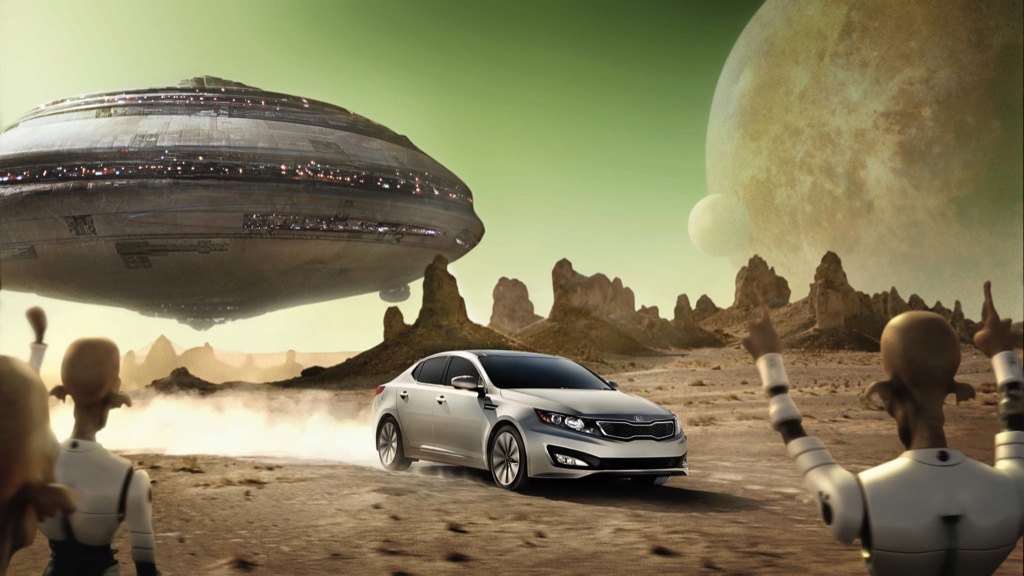
Monday, January 31, 2011: Kia Motors hopes its Super Bowl TV commercial will inspire viewers to purchase an Optima midsize sedan. The 60-second spot, entitled "One Epic Ride," features a science fiction theme, including characters such as space aliens, Poseidon, and an Aztec-style chief.
--Tom Chao
Join our Space Forums to keep talking space on the latest missions, night sky and more! And if you have a news tip, correction or comment, let us know at: community@space.com.

Space.com is the premier source of space exploration, innovation and astronomy news, chronicling (and celebrating) humanity's ongoing expansion across the final frontier. Originally founded in 1999, Space.com is, and always has been, the passion of writers and editors who are space fans and also trained journalists. Our current news team consists of Editor-in-Chief Tariq Malik; Editor Hanneke Weitering, Senior Space Writer Mike Wall; Senior Writer Meghan Bartels; Senior Writer Chelsea Gohd, Senior Writer Tereza Pultarova and Staff Writer Alexander Cox, focusing on e-commerce. Senior Producer Steve Spaleta oversees our space videos, with Diana Whitcroft as our Social Media Editor.
